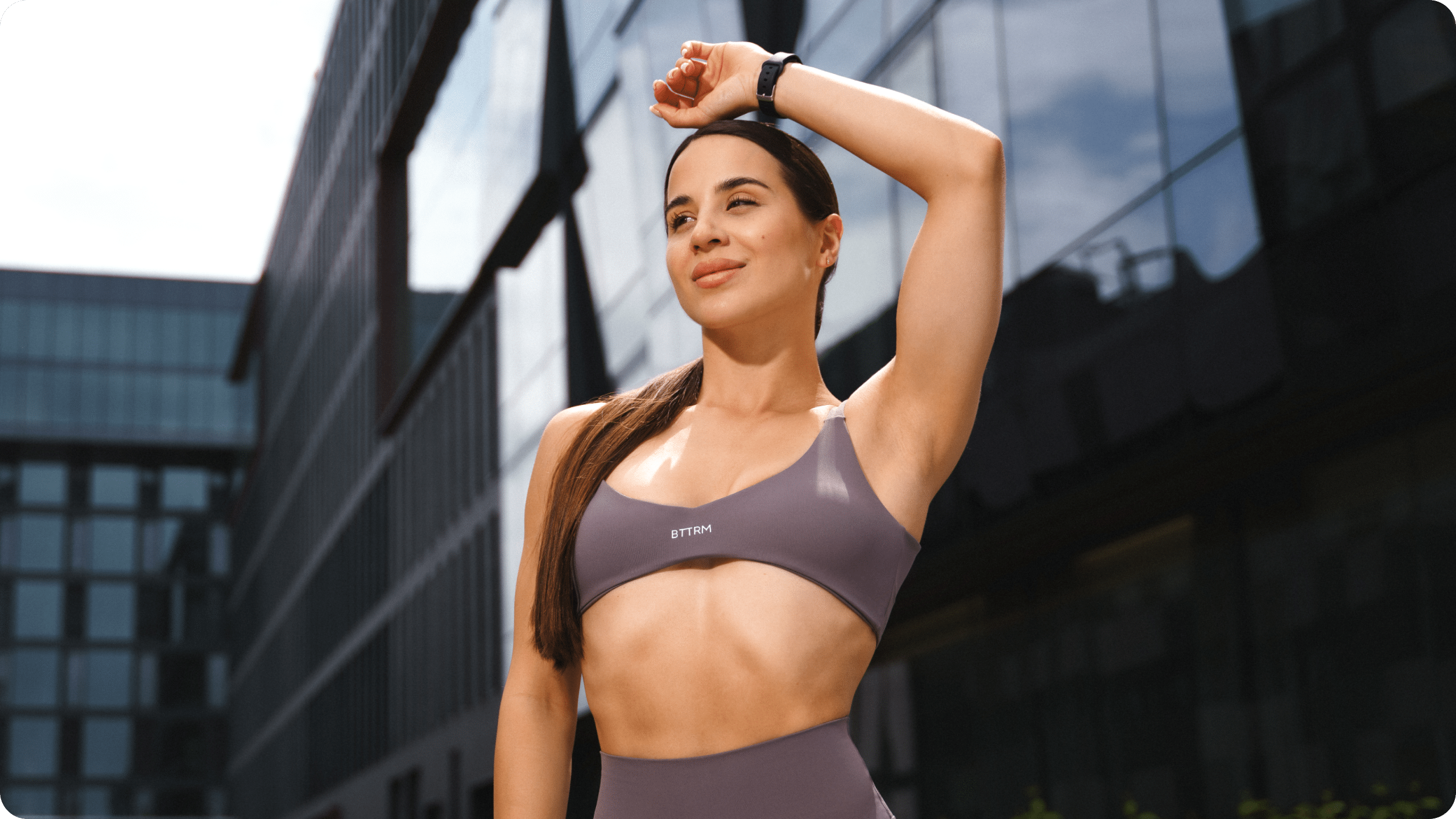Walking is an important form of exercise. It helps maintain a healthy heart, among other things. It is a natural movement that we learn from early on, and that has many different types of walking styles. These styles depend upon the specific purpose of the walker.
Some people will choose to walk for exercise or pleasure. Other people will be forced into a particular style of walking by their surroundings or physical condition. The following article will briefly describe five common types of walking styles, what type of benefits they may provide, and who might benefit from them the most.
The Amble
The amble is a slow and relaxed walk. This style of walking is normally associated with nature walks or long vacation strolls. It can be used for exercise, but the pace will not provide much cardiovascular benefit.
People who enjoy this type of walking generally do so to admire their surroundings and get away from hectic daily life. These people may also choose to take part in longer recreational hikes to escape civilization for a few hours at a time.
The Casual Stroll
A casual stroll is a common walking style to be found in most towns and cities. People use this type of walk for transportation, exercise, or simply because it is the fastest way from point “A” to point “B”.
In general, this type of walk will not provide any real cardiovascular benefit. The reason for this is that the legs are kept at a relatively short stride, thus creating little strain upon the heart.
Casual strolling may have more benefits for the mind than it does for the heart. It’s the kind of walk one takes when they need to get some fresh air, rest their minds, or just get a break after a long day.
The Steady Walk
A steady walk is a form of walking that involves a constant, moderate pace. This type of walking is most commonly found on hiking trails. Like the casual stroll, the steady walk will not provide any real cardiovascular benefits to its participants. However, it can be an enjoyable way for people to exercise and escape their chaotic lives.
This type of walk gives hikers time to rest without stopping too long or slowing down too much. It allows them to travel steadily along until they are ready for something more challenging or want to return home.
Read More: Nordic Walking: Is This New Workout Craze Worth It? Benefits, Disadvantages And Risks
The Brisk Walk
The brisk walk is a moderately quick pace. This type of walking requires the body’s muscles to work harder because of its faster pace. Thus, it provides a gentle cardiovascular workout while allowing the walker to cover a long distance in a short period (10). People who choose this style of walking may do so for exercise or simply because they have plenty of ground to cover and little time to get there.
People who engage in brisk walks often wear lightweight athletic gear such as shorts, thin shoes, and thin shirts. Some people even don these outfits during chilly weather for their convenience. The athletic clothing helps keep sweat away from the skin and allows air circulation around the whole body—this enhances aerobic benefits further still.
Having a brisk walk several times a week can be good for you as it improves endurance fitness (1). If you’re unsure whether what you’re doing is a brisk walk, here’s a distinctive criterion – brisk walks make you feel breathless, but you should still be able to hold a conversation. You might want to warm up before and cool off after one of such walks, but it’s not entirely necessary.
Power Walking
The power walk is a quick pace to improve cardiovascular fitness. Power walking can provide both mental and physical benefits if it is done twice a week on average. It requires some level of athleticism to perform, but just about anyone who can walk can do this without much struggle.
Power walking provides an excellent way to improve cardiovascular health because the body’s muscles are forced into vigorous motion. The person engaging in such activity will experience rapid breathing and perspiration— these things work together to release chemicals that increase stamina and reduce one’s risk for serious illness.
Over time, muscle strength will also increase, which then allows certain physical performance challenges (such as climbing stairs) to be performed more easily over time.
The Power Walk: How Effective Is It?
Power walks tend to be very effective for those who don’t have any excess body fat on their frames; those who do need to lose weight, before trying this type of exercise, should consider doing so first (way before actually engaging in power walks).
As long as you’re healthy and fit enough for vigorous activity, you can benefit from adding power walks to your weekly exercise routine.
Those who are new to this type of training should start slow and build up their speed gradually to avoid injury. You’ll be surprised at how much you can do in such a short time when putting forth the effort.
Race Walking
A race walk is a specific form of walking which follows certain rules. While the overall goal is to get from one place to another as quickly as you can, there are limits on how this is done.
For instance, a racewalker must keep one foot in contact with the ground at all times; raising either leg more than six inches off the floor while walking will result in disqualification from an event.
This type of activity requires strong muscles and good cardiovascular stamina. Racewalkers normally walk with a rigid and straight back because this posture allows them to conserve both energy and stamina (11).
Race walking is an excellent exercise for those who are trying to lose weight.
While it isn’t as fast as running, the body still burns plenty of calories, 200 or more per hour if conditions are right. This makes race walking suitable for those looking to shed unwanted pounds— in fact, it’s one of the best things that a person can do.
It also has fewer impacts on joints than running because race walkers aren’t bouncing around, which limits the risk of injury if performed properly.
If you wish to cinch your waist, tone up your bat wings, blast away the muffin top – our fitness app was created to cater to all your needs! BetterMe won’t give excess weight a chance!
The Race Walk: How Effective Is It?
Because race walking requires constant movement at a fast pace, it’s very effective at burning fat stores in the body; these chemicals are released into the bloodstream and used as fuel for muscles.
Racewalking is a dynamic exercise and burns more calories than simply walking. This makes it ideal for those who want to lose weight fast as you can drop up to ten pounds in just a month if conditions are right (as long as you aren’t overeating or growing discouraged).
Race walking is also very good at increasing stamina over time because it’s such an intense form of calisthenic training.
Nordic Walking
Nordic walking (also known as “cross-country walking”) is more of a walking activity than an actual style. The only real similarities to other types of walking are that the feet are always kept on the ground and that one foot follows directly after another.
Nordic walking isn’t actually a form of racing, even though it may resemble power walking in some ways (it’s all about working up a sweat while having fun outdoors, not taking first place). It was invented by an outdoors enthusiast who felt he could make hiking easier— he did this by attaching long poles to his hands, which meant he didn’t have to bend down so much while negotiating rough terrain or climbing uphill.
This type of exercise focuses on the muscles in the upper body and lower legs – making it a good choice for those who want to develop strength and agility simultaneously.
Nordic walking is also an excellent way to build endurance without having to run or jog, which can automatically cause the body to become injured if overdone (3).
The Nordic Walk: How Effective Is It?
Because this form of walking is still relatively new, there isn’t much information available to explain how effective it is at helping people lose weight or build muscle mass.
However, one thing is certain: Nordic walking can be a very safe way to get in shape. It doesn’t place the same kinds of stress on muscles and joints while exercising.
So, while there isn’t much research available, it’s safe to say that Nordic walking is a very effective way to burn calories and build strength— it just might not be as fast as running, which means you’ll have to work out for a little longer.
There may also be some limitations on how long you can engage in this form of exercise because both endurance and stamina will be limited by the fact that you’re still walking on two feet.
Most people who want to increase their strength while losing weight, therefore, opt for a combination of running and walking instead.
The Benefits Of Nordic Walking
Nordic walking is a healthy and fun way to get in shape. It works out virtually every part of the body while letting you listen to your favorite music and enjoying the wind on your face (you’ll probably want to use some hand sanitizer after handling those wooden rods!).
It’s good for individuals who are struggling with stress since it provides a means of venting without being too aggressive. It’s also quite beneficial for those who have knee problems or a bad back; they can still enjoy the joys of working out, just without the extreme stresses that come with more competitive activities.
It’s even useful as a form of therapy because Nordic walking is great at strengthening muscles that have become weak over time.
Best of all, Nordic walking is a very popular activity in Europe; you’ll be joining some 2.5 million other people who are enjoying the health benefits of this physical exercise every single day.
Read More: Nordic Walking Disadvantages: Do The Cons Outshine The Pros?
What Are The Health Benefits Of Walking?
The American Heart Association recommends at least 30 minutes of moderate-intensity aerobic activity five days a week for adults aged 18 to 64. Walking at a moderate to high-intensity pace is one such activity. Some of the health benefits of walking exercises are:
Improved Heart Health
The heart is the most important organ in our body. The American Heart Association (AHA) recommends 30 minutes of moderate-intensity aerobic activity five days a week for adults aged 18 to 64 years old. Moderate-intensity activities like walking can strengthen your heart and reduce blood pressure and cholesterol levels, leading to a lower risk of cardiovascular diseases; such as strokes and heart attacks (6).
Reduced Risk Of Diabetes And Metabolic Syndrome
Regular exercise like walking helps maintain insulin sensitivity, which plays an important role in regulating glucose levels in the body (7). People suffering from diabetes or metabolic syndrome are at increased risk of developing chronic inflammation, which is associated with many health conditions ranging from cancer, obesity, Alzheimer’s disease to eye diseases like macular degeneration and cataracts.
Regular Walking Can Boost Immunity
Aerobic exercises like walking have been shown to increase the levels of cytokines, proteins that are known to boost immunity (5). Additionally, regular physical activity can reduce the risk of inflammatory conditions like arthritis and asthma by improving the efficiency of anti-inflammatory molecules in our bodies.
Improved Bone Strength
Walking is one of the most effective activities for building strong bones. It strengthens muscles around your hips and knees, ensuring proper support for your joints while helping you burn more calories, thus, lessening your risk of developing obesity-related complications like osteoarthritis (wear and tear of tissues inside joints) or cardiovascular diseases. Walking also helps prevent age-related bone loss (osteoporosis) because it stimulates the body to produce bone-building cells called osteoblasts, which are essential for maintaining strong bones (9).
Improved Sleeping Quality
Studies have shown that regular physical activity like walking can improve sleep quality by helping people fall asleep faster and stay asleep longer (4). Additionally, it can reduce sleep apnea symptoms, restless leg syndrome (RLS), muscle pain, and Raynaud’s phenomenon.
BetterMe is your fast-track ticket to a long-lasting weight loss! Tailor your fitness journey and maximize your results with just a couple of swipes!
Enhanced Cognitive Function
Physical activity like walking can help boost your brainpower (12). It increases blood flow to the brain, which helps improve cognitive functions such as attention, memory, and problem-solving skills.
Improved Sense Of Wellbeing
Regular physical activity like walking not only improves the quality of life but reduces stress and anxiety by helping you feel calmer and more relaxed as well (2).
Long-term regular physical activity like walking can help alleviate the symptoms of depression by increasing the production of happy hormones, also known as endorphins (8). Endorphins are natural feel-good chemicals that are released in the body during physical activities, which makes them ideal for stress relief and other mood disorders.
The Bottom Line
Walking is an effective exercise for weight loss, improved cardiovascular health, enhanced immunity, stronger bones, and better sleep quality. Try to start with five to ten minutes of walking three days a week and gradually increase the number of minutes overtime.
DISCLAIMER:
This article is intended for general informational purposes only and does not serve to address individual circumstances. It is not a substitute for professional advice or help and should not be relied on for making any kind of decision-making. Any action taken as a direct or indirect result of the information in this article is entirely at your own risk and is your sole responsibility.
BetterMe, its content staff, and its medical advisors accept no responsibility for inaccuracies, errors, misstatements, inconsistencies, or omissions and specifically disclaim any liability, loss or risk, personal, professional or otherwise, which may be incurred as a consequence, directly or indirectly, of the use and/or application of any content.
You should always seek the advice of your physician or other qualified health provider with any questions you may have regarding a medical condition or your specific situation. Never disregard professional medical advice or delay seeking it because of BetterMe content. If you suspect or think you may have a medical emergency, call your doctor.
SOURCES:
- Brisk walking improves endurance fitness without changing body fatness in previously sedentary women (1992, pubmed.ncbi.nlm.nih.gov)
- Exercise for Mental Health (2006, ncbi.nlm.nih.gov)
- Fitness trend: Nordic walking (2019, health.harvard.edu)
- How Can Exercise Affect Sleep? (2021, sleepfoundation.org)
- Physical exercise as a tool to help the immune system against COVID-19: an integrative review of the current literature (2020, ncbi.nlm.nih.gov)
- Quantifying the dose-response of walking in reducing coronary heart disease risk: meta-analysis (2009, pubmed.ncbi.nlm.nih.gov)
- Steps to preventing Type 2 diabetes: exercise, walk more, or sit less? (2012, frontiersin.org)
- The Benefits of Exercise for the Clinically Depressed (2004, ncbi.nlm.nih.gov)
- The Effectiveness of Physical Exercise on Bone Density in Osteoporotic Patients (2018, hindawi.com)
- Walking: Trim your waistline, improve your health (2021, mayoclinic.org)
- What is Race Walking? (n.d., active.com)
- Working out boosts brain health (2020, apa.org)
















